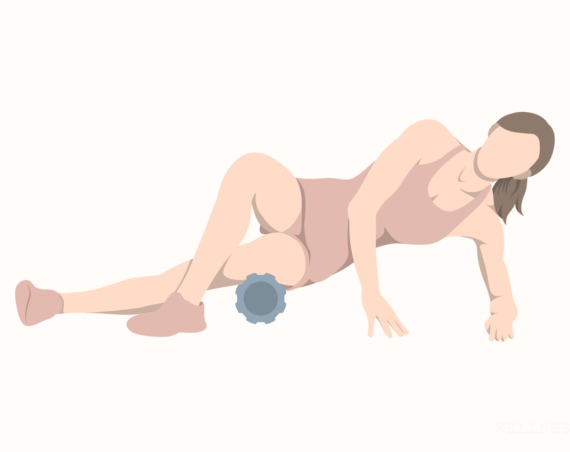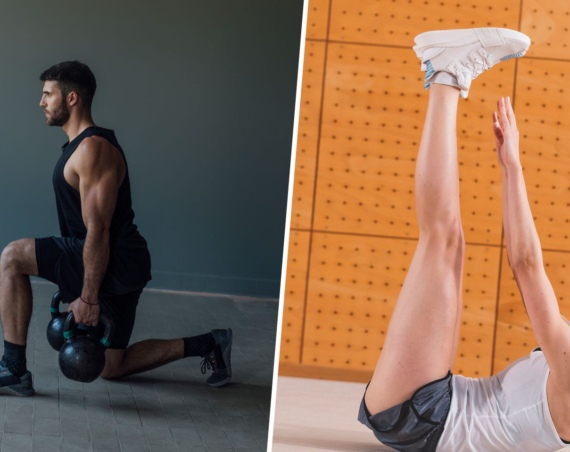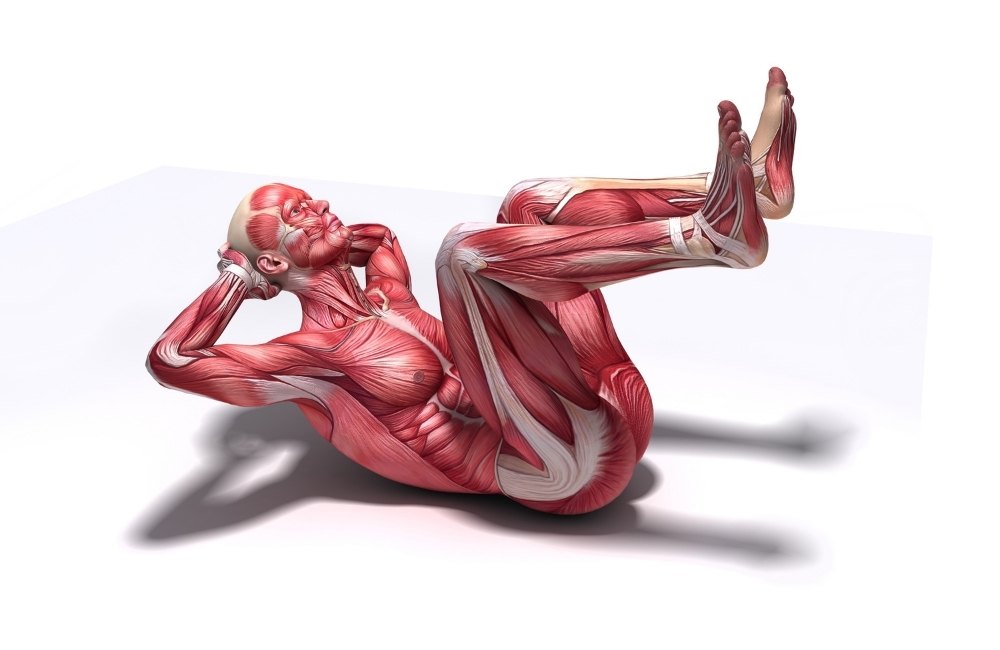
Tone your abs and strengthen your core muscles with these 5 best core exercises, say experts!
Core strength is a crucial component in any exercise. A stronger core helps you keep proper posture whether you are running, squatting, sitting, or simply standing.
Having good core strength is absolutely vital to functional fitness. If you exercise regularly, strengthening your core gives you solid rock abs that look great in any outfit!
In this article, we will review the anatomy of “the core” and outline 5 of the best exercises to develop these essential muscles.
The 7 Best Core Strengthening Exercises to Tone Your Abs
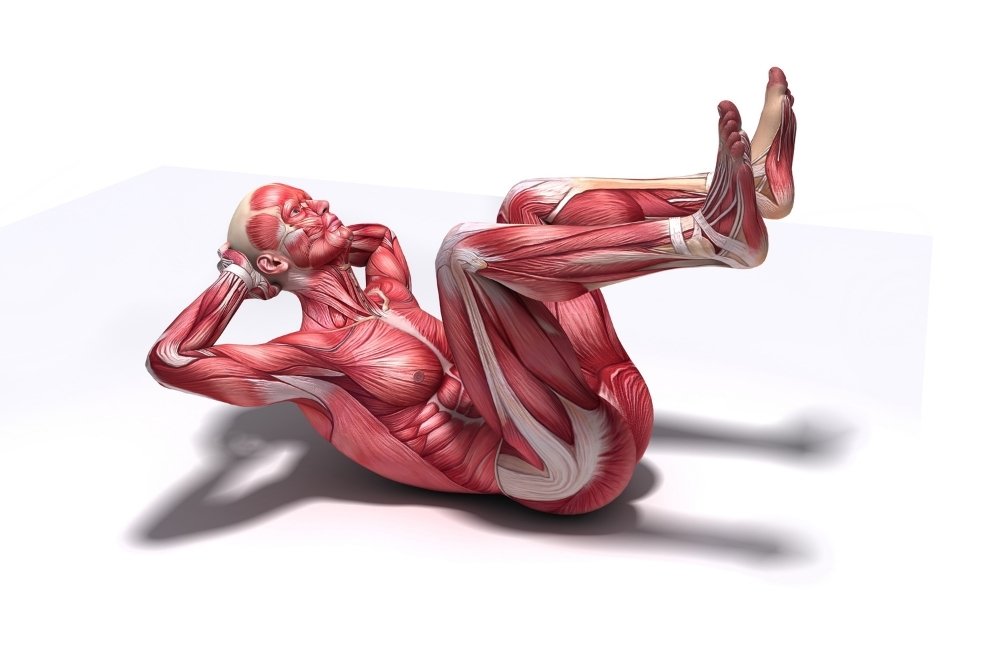
You also like:
The Only Ab Exercises You’ll Ever Need for Six-Pack Abs, According to Science
15 Exercises Missing From Your Ab Workouts: Build Core Strength and Burn Belly Fat
Understanding Your Core Muscles and Their Function (Chart)
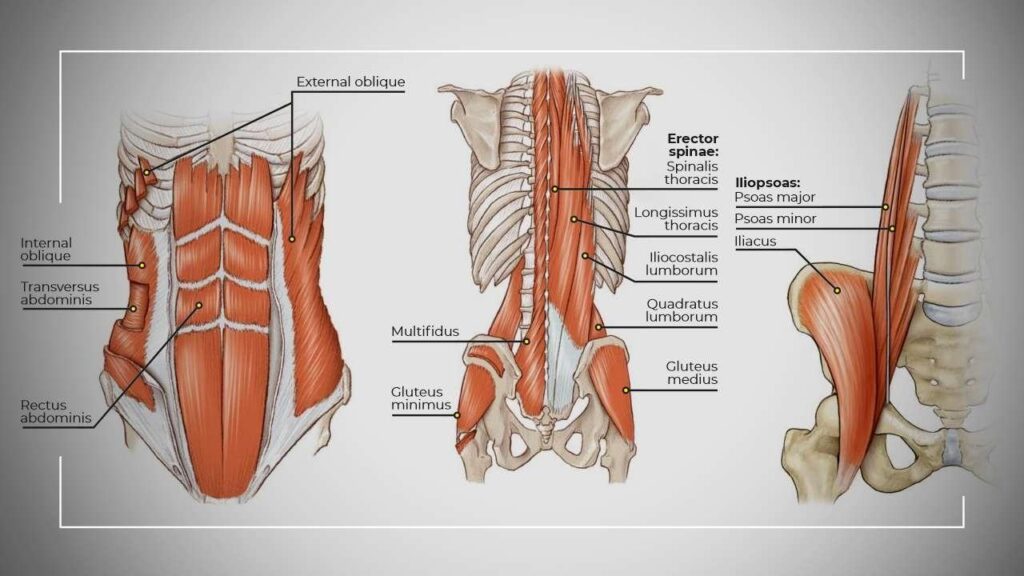
Depending on who you talk to, you may receive a very long list of muscles that make up the core or a very short list. For our purposes, let’s define the core as the following group of muscles:
- Internal and External Obliques. Running along the sides of the trunk are two groups of small, interconnected muscles known collectively as the obliques. These muscles provide stability to the trunk and are highly active during motions requiring rotation.
- Rectus Abdominis. The RA is what most people think of as the “6-pack muscles”. This band of tissue lies in the dead center of the abdomen, and many lifters strive to develop a perfectly defined rectus abdominis over their lifetimes.
- Multifidi. These little-known muscles lie on either side of the spine and provide support during rotational and bending movements.
- Glutes. One of the strongest muscles in the body, the glutes can affect our posture and stability throughout the spine.
- Muscles of the Pelvic Floor. In recent years, physical therapists have dedicated much more energy to improving the strength and stability of the pelvic floor. When this area is strong, many people notice improved posture, decreased back pain, and fewer instances of incontinence.
Of course, there are many other muscles that could be included in the core.
But the above list provides a general starting point to provide the reader with a basic understanding of how broadly we can apply the term “core muscles”.
Core Exercise Basics
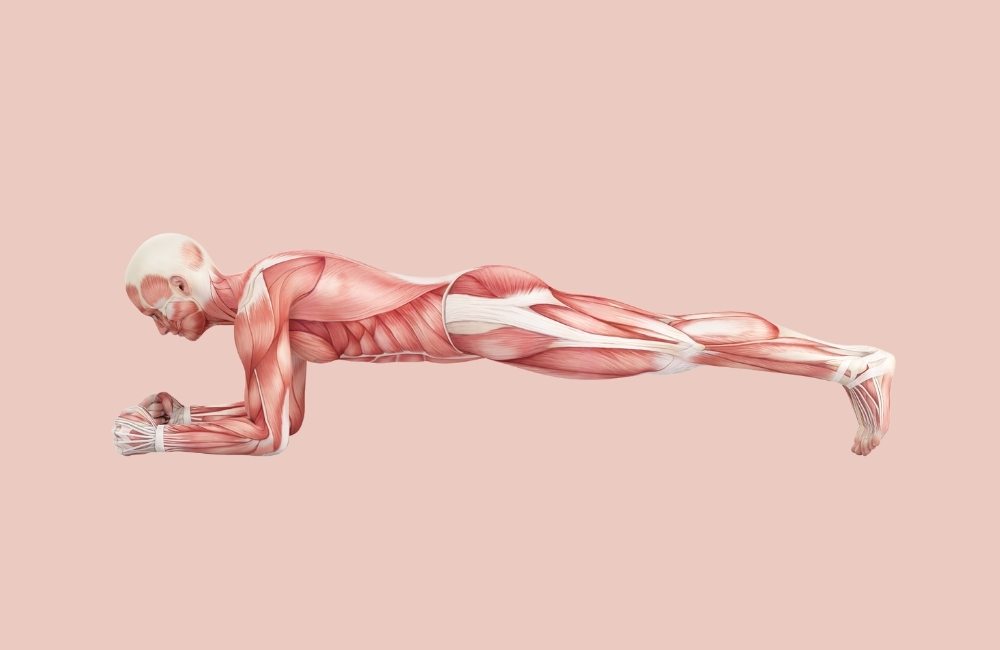
So, what exactly are core exercises, if they aren’t just abdominal movements like crunches?
Core exercises can be thought of as those that encourage the lifter to use his or her own muscles to provide stability, rather than a surface like a bench.
For example, one might consider two distinct movements to understand what core exercise is:
- Bench press on a machine.
- Pushups with feet on a stability ball.
Granted, each of these exercises primarily strengthens the pecs, shoulders, and triceps.
However, when a person performs a core exercise such as push-ups on a stability ball, he also works his obliques, many different leg muscles, and tons of stabilizers throughout the body.
Also, it should be said that there is nothing wrong with performing a traditional exercise, such as using a bench press machine.
But core exercise tends to give the lifter a lot more “bang for the buck” so to speak.
Specifically, many more muscles are developed during each movement when one prioritizes core exercise
The 7 Best Core Exercises to Tone Your Abs
In this section, I’ll outline some of the best core exercises in existence. Additionally, I’ll show you how you can incorporate these movements into a killer workout!
1. Crunches
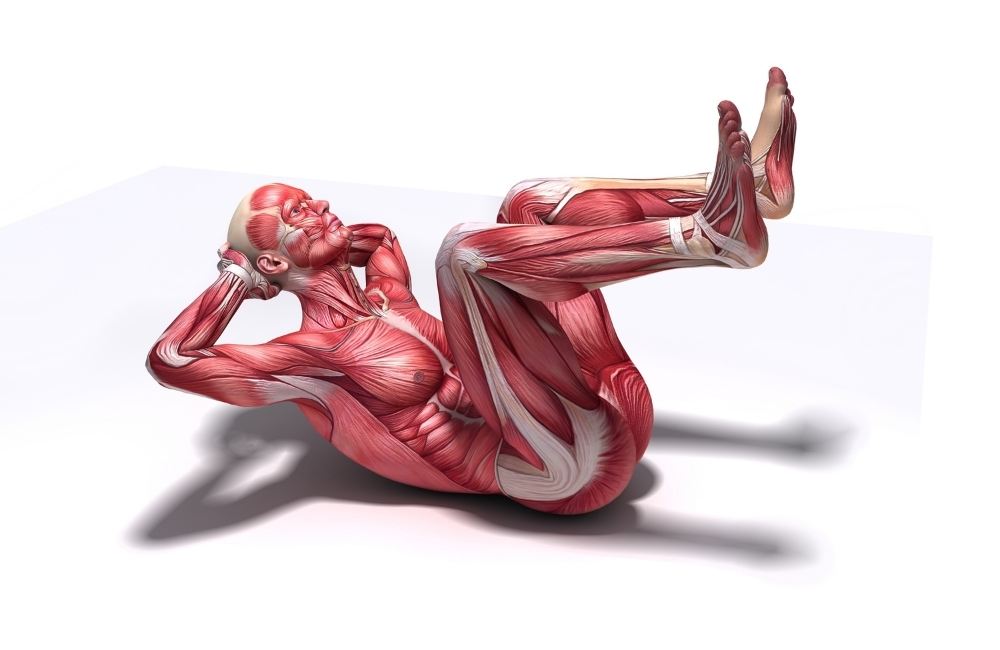
An oldie, but a goodie. Crunches are a terrific exercise that has stood the test of time. Even better: you can literally perform crunches anywhere, as long as you have space to lay down.
How to Perform:
- Lie with your back flat on the ground, your knees bent, and feet off the ground. Lift your feet until your shins are almost parallel to the ground.
- Place your hands behind your head. Hold the head in a neutral position so your neck is in line with the body.
- Lift your shoulder blades up off the ground, then return to the starting position to complete the rep.
- Perform 10-20 repetitions per set.
2. Mountain Climbers
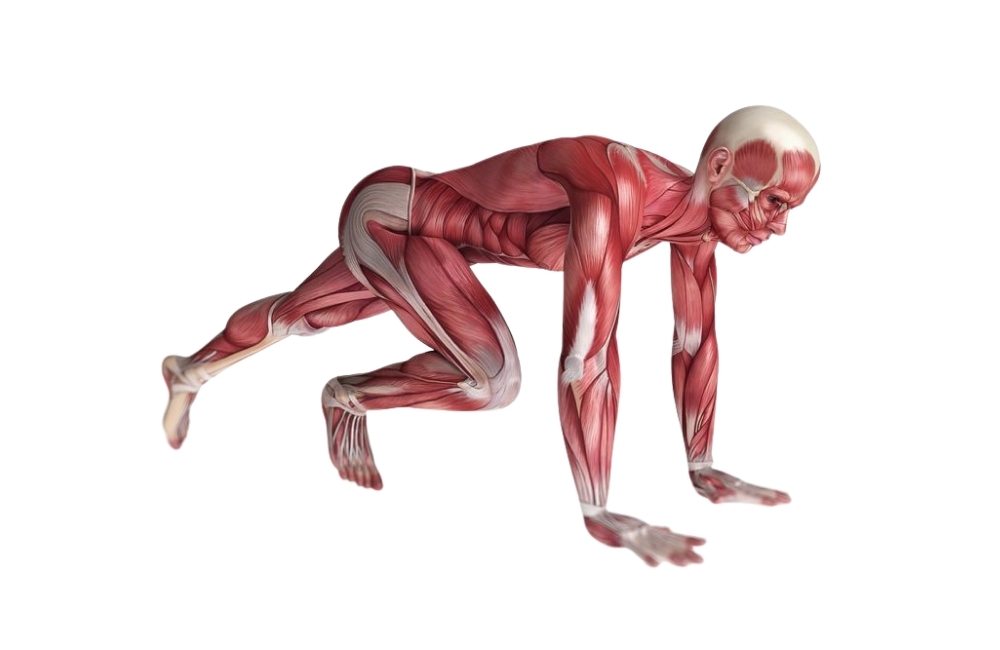
Mountain climbers are great for both core strengthening and cardiovascular endurance. Also, this exercise can be modified in a variety of ways to accomplish different goals.
How to Perform:
- Place both hands on the ground, as well as both toes, as if you are in a pushup position.
- Slowly bring one knee toward your chest and then slowly return it to the starting position. Then repeat the motion on the other side. (If your goal is to increase your cardiovascular endurance, perform the motion very rapidly, alternating between sides.)
- Complete 10-15 reps per side, per set.
3. Crunches on a Stability Ball
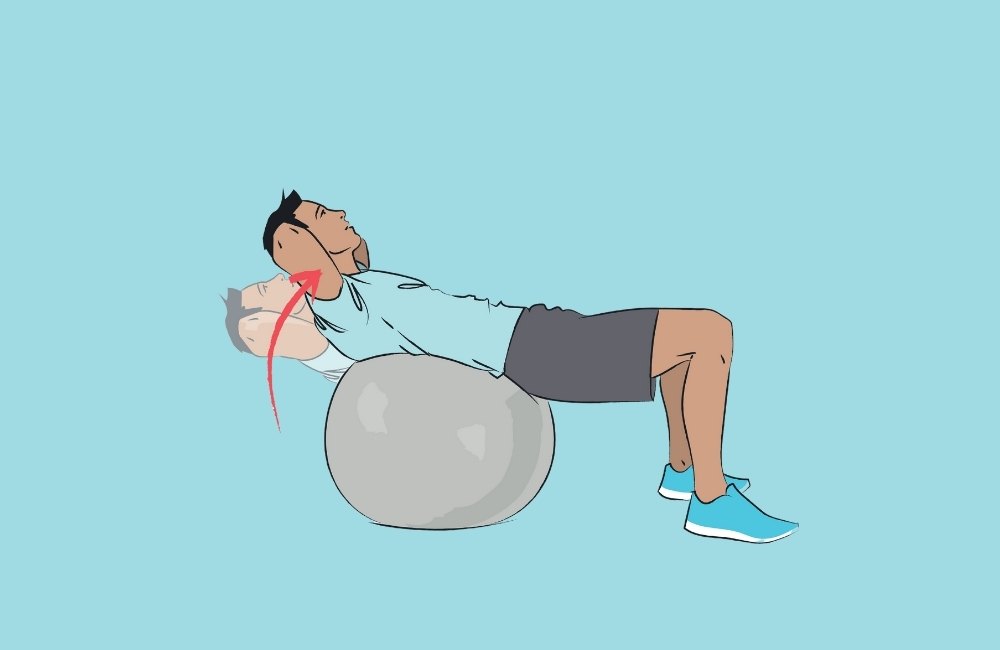
This exercise uses one of the most basic movements there is: the crunch, and adds in an element of instability in the form of a swiss ball.
These crunches can be tricky to master, but give it some time and you’ll be repping these out like it’s nothing!
How to Perform:
- Start by sitting on the ball.
- Slowly start to walk your legs forward, allowing yourself to lie down on the ball.
- Place both hands across your chest, or on your temples.
- Perform a crunch by contracting your abdominal muscles and lifting your shoulder blades off of the ball.
- Slowly return to the starting position to complete the rep.
- Complete 10-15 repetitions per set, 3-5 sets per session.
4. Palof Press (Medicine Ball )
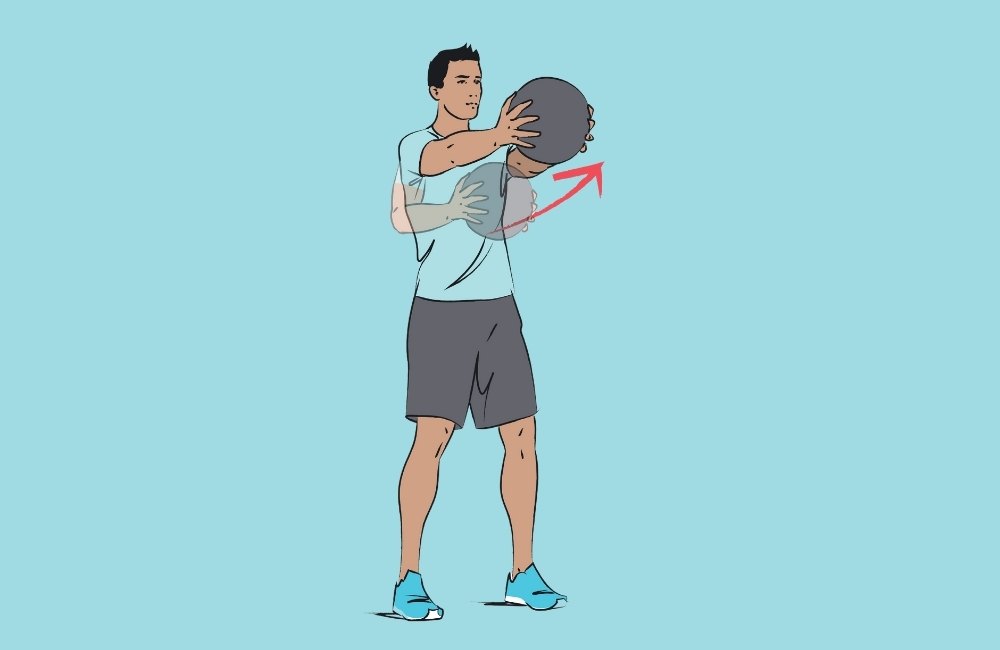
The Palof press is a phenomenal exercise for developing trunk and shoulder stability.
Best of all, it can also be performed with band resistance, adding a new element of balance and strength!
How to Perform
- Select a medicine ball that is challenging for you to hold, but not so heavy that you have to sacrifice good form.
- Hold the ball with both hands at chest height.
- Slowly push the ball out in front of you until your arms are fully extended.
- Hold this position for 5 seconds, then bend your arms, returning the ball to your chest to complete the rep.
- Perform 10-15 repetitions for 3-5 sets per session.
5. Pushups with Feet on a Stability Ball
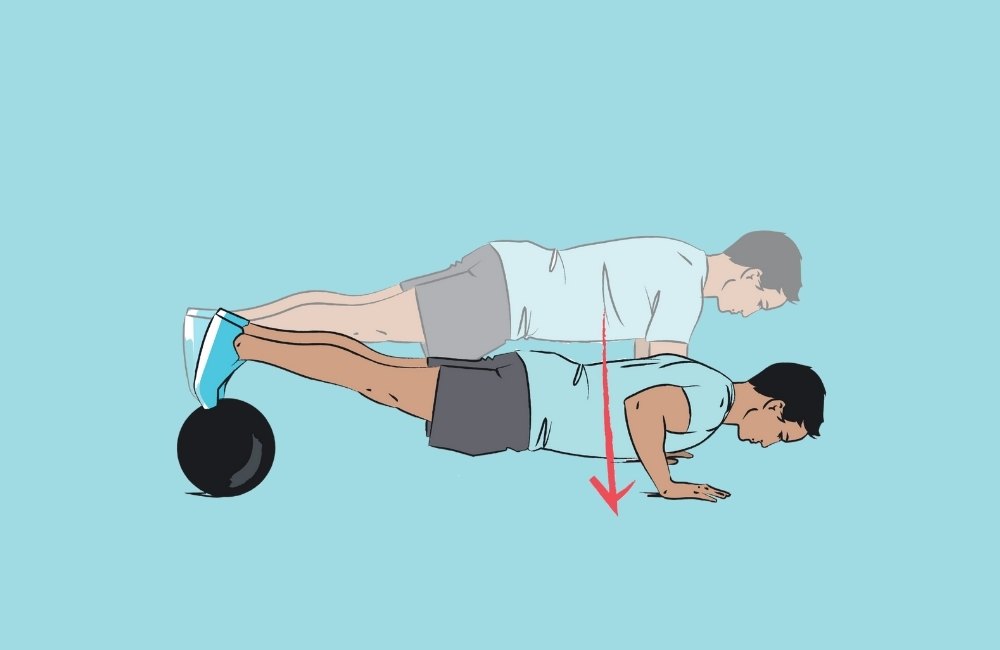
Truth be told, this is a very difficult exercise. Be honest with yourself before attempting this one.
Only those who have fully mastered the pushup and the art of balancing on a ball should be performing this movement.
How to Perform:
- Select a stability or medicine ball of appropriate size (try out some different sizes to see what works best for you!)
- Place both feet on the ball, and both hands on the ground, in a proper push-up position.
- Keeping yourself steady, slowly lower your chest toward the ground.
- Once you’ve reached the bottom of your range, push yourself back up to the starting position, completing the rep.
- Perform 10-12 reps for 3-5 sets.
6. Squats on the Flat Side of the Bosu Ball
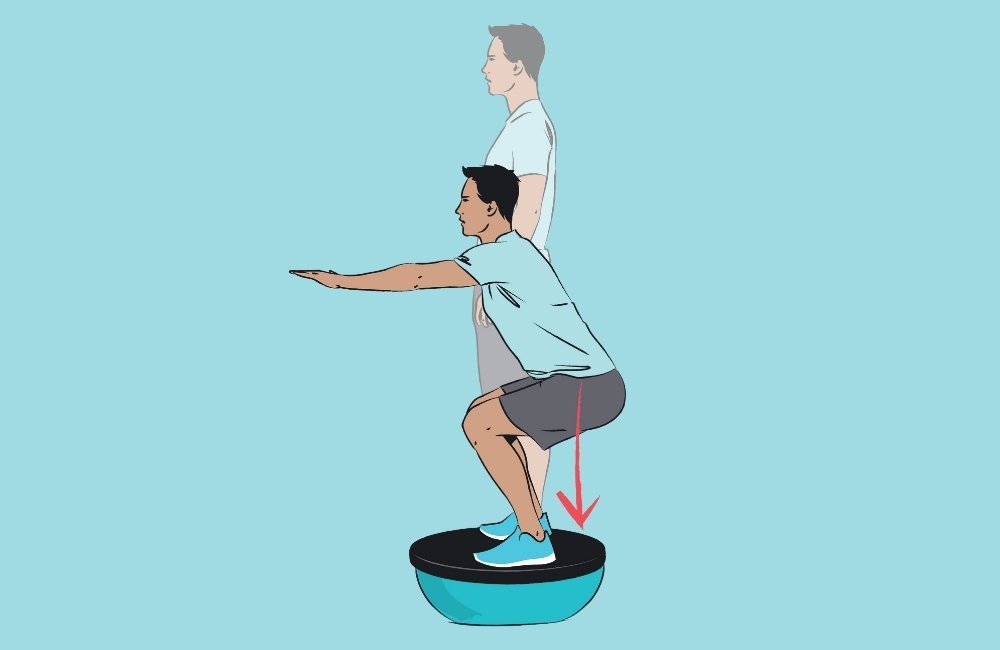
Warning: perform this movement near a wall or other stable surface.
Once you get situated on the ball, most first-timers have tons of difficulty keeping the Bosu from wiggling all over the place and throwing them off. This exercise really challenges the core muscles.
How to Perform:
- Step carefully onto the flat side of the Bosu ball, using a wall or other supportive surface for balance.
- With your feet about hip-width apart, perform a squat by bending your knees and moving your hips down toward the ground.
- Keep the ball stable by using your core and ankle muscles throughout the movement.
- Perform 10-12 reps for 3-5 sets.
7. Side Plank on Bosu Ball
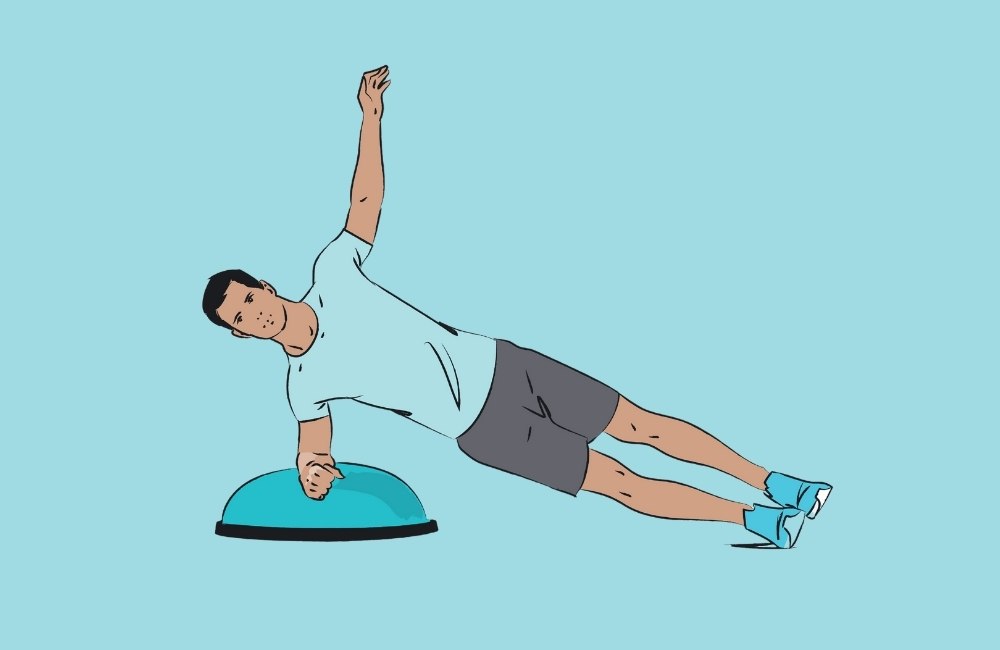
Performing exercises on the Bosu ball is equal parts challenging and rewarding. These tricky little tools create a tough surface on which to balance, no matter which side is facing up!
How to Perform:
- Start with your right forearm on the domed side of the Bosu ball.
- Stack your left foot on top of your right and lift your hips up towards the ceiling.
- Hold this position for 10-30 seconds, then slowly lower yourself down to the starting position.
- Perform 3-5 reps for 3-5 sets on each side per session.
15-Minute Core Workout
To effectively incorporate the above exercises into a workout, you have to perform each of them as part of a circuit.
Specifically, structure this circuit workout so that you perform exercise one for the desired number of reps. Then, you should strive to move immediately on to exercise two, with as little rest as possible. Repeat this pattern until you’ve completed all of the exercises 3-5 times.
This workout can be performed as many as 4 times a week, or as few as once a week. It depends on your current level of fitness! If you’re unsure of how often you should perform exercises, talk with your physical therapist or doctor.
This workout will help to improve your cardiovascular endurance, as well as your strength and stability.
Final Takeaway on Core Exercises
Core exercise is an essential component of every fitness regimen.
If you’ve never tried these intense stability exercises before, just be sure to go slow, don’t injure yourself, and talk with a medical professional if you have any questions!
Add these 7 core exercises to your ab workout routine.

